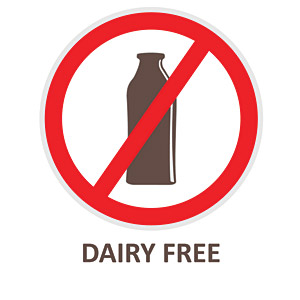 What is an allergen? Allergens are proteins that trigger an immune response by certain people. Responses range from relatively mild symptoms, such as developing a rash, to severe reactions involving respiratory and circulatory problems that in extreme cases can cause death. It has been estimated that approximately 2% of adults and 5% of young children are allergic to some type of food.
What is an allergen? Allergens are proteins that trigger an immune response by certain people. Responses range from relatively mild symptoms, such as developing a rash, to severe reactions involving respiratory and circulatory problems that in extreme cases can cause death. It has been estimated that approximately 2% of adults and 5% of young children are allergic to some type of food.
Theoretically, almost any protein in a food could be allergenic. However, there are eight foods that account for almost 90% of the allergic reactions in adults. These are often referred to as the Big 8 Allergens; milk, eggs, peanuts, tree nuts, fish, shellfish, soy and wheat. These allergens are obviously a foe to anyone who is allergic to them. However, if properly labeled and controlled, they can be a friend to meat processors enabling them to produce specialty products that a majority of consumers can enjoy.
Take for example the milk allergen, cheese. It is one of the most popular specialty ingredients used in meat processing. It is often used to produce specialty smoked sausage, summer sausage, burgers and hot dogs. Non-fat dry milk is often used in processed meat products to improve texture, flavor and yield.
Frequently soy proteins are used in the production of both fresh and cooked processed meat products. Soy proteins can help maintain product yield after cooking and have a positive impact on the juiciness of products when consumed. Other Big 8 Allergens are also used in the production of processed meat products.
When using allergens there are two things you must do:
Properly label products containing allergens
Prevent cross-contamination between product which contains allergens and allergen free product
The only way for sensitive consumers to avoid having an allergic reaction is to avoid consuming the allergen. Even very small amounts of an allergen are capable of triggering a reaction in extremely sensitive individuals.
There are several things that processors can do to help ensure that products are properly labeled and that cross-contamination does not occur. Proper labeling and prevention of cross-contamination is critical and is the responsibility of the processor.
To insure products are properly labeled:
- Verify the accuracy of your labels against the product formulation;
- Verify that there are no allergens in ingredients that you are using that you have not considered;
- Use batch sheets to document all ingredients that are added to a product.
To prevent cross-contamination:
- Store allergens separately from non-allergens;
- Store ingredients containing allergens separately;
- Keep product-in-process which contains allergens separate from non-allergen product;
- Schedule it so that you produce allergen products after non-allergen containing products;
- Schedule it so that you package allergen products after non-allergen containing products;
- Thoroughly clean all equipment and surrounding establishment area after the production of allergen containing products;
- Test the cleaned equipment to verify it is allergen free;
- Establish traffic patterns to ensure that allergen containing materials do not move through non-allergen areas;
- Train employees in the proper handling of allergens;
- Each establishment should have a written allergen policy and accurately document that the allergen policy is being followed.
Remember: Undeclared allergens resulting from mislabeling, incorrect formulation or cross-contamination is a major cause of product recalls. Don’t let it happen to you.





Report Abusive Comment